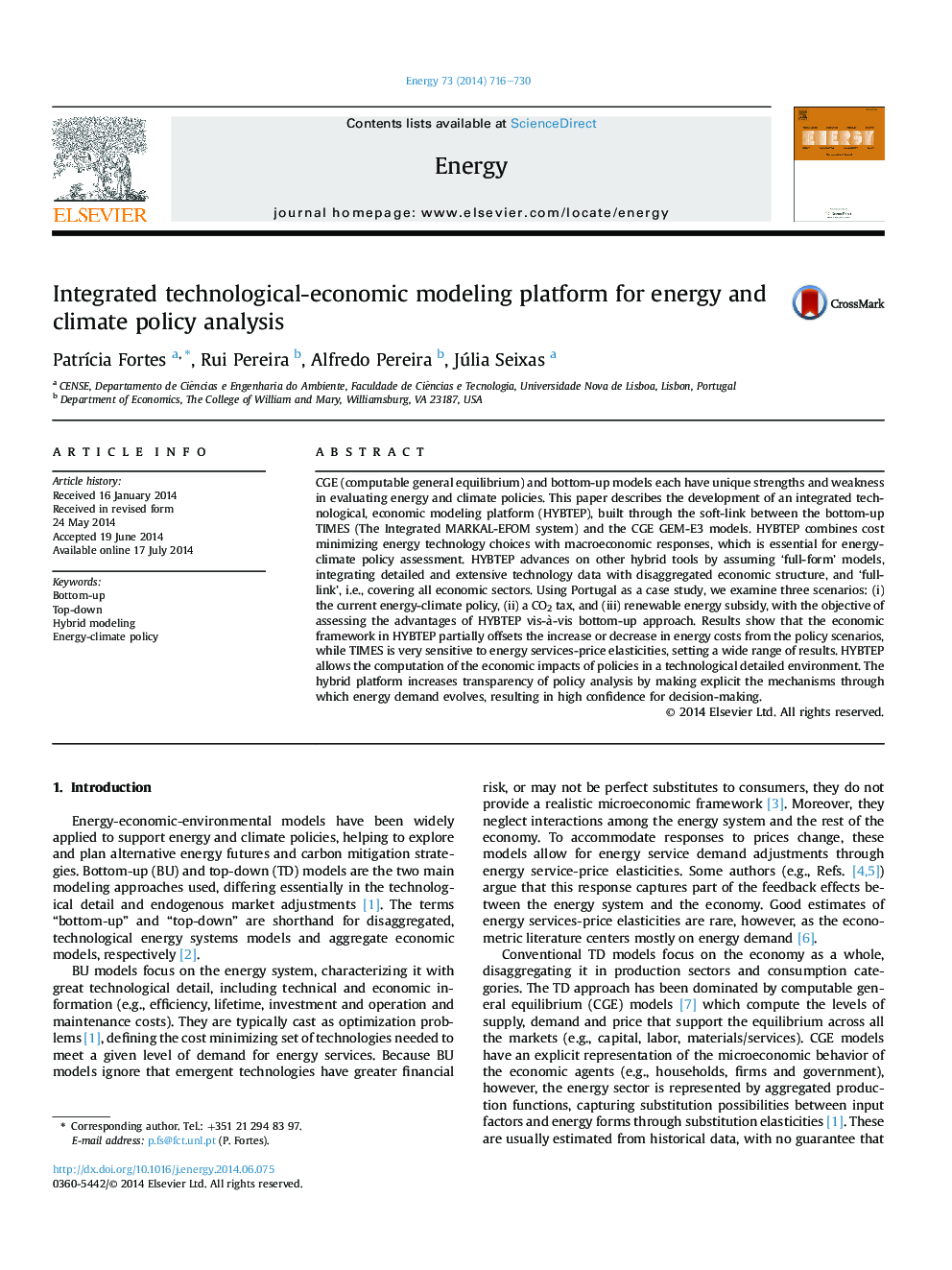| Article ID | Journal | Published Year | Pages | File Type |
|---|---|---|---|---|
| 8077127 | Energy | 2014 | 15 Pages |
Abstract
CGE (computable general equilibrium) and bottom-up models each have unique strengths and weakness in evaluating energy and climate policies. This paper describes the development of an integrated technological, economic modeling platform (HYBTEP), built through the soft-link between the bottom-up TIMES (The Integrated MARKAL-EFOM system) and the CGE GEM-E3 models. HYBTEP combines cost minimizing energy technology choices with macroeconomic responses, which is essential for energy-climate policy assessment. HYBTEP advances on other hybrid tools by assuming 'full-form' models, integrating detailed and extensive technology data with disaggregated economic structure, and 'full-link', i.e., covering all economic sectors. Using Portugal as a case study, we examine three scenarios: (i) the current energy-climate policy, (ii) a CO2 tax, and (iii) renewable energy subsidy, with the objective of assessing the advantages of HYBTEP vis-Ã -vis bottom-up approach. Results show that the economic framework in HYBTEP partially offsets the increase or decrease in energy costs from the policy scenarios, while TIMES is very sensitive to energy services-price elasticities, setting a wide range of results. HYBTEP allows the computation of the economic impacts of policies in a technological detailed environment. The hybrid platform increases transparency of policy analysis by making explicit the mechanisms through which energy demand evolves, resulting in high confidence for decision-making.
Keywords
Related Topics
Physical Sciences and Engineering
Energy
Energy (General)
Authors
PatrÃcia Fortes, Rui Pereira, Alfredo Pereira, Júlia Seixas,
